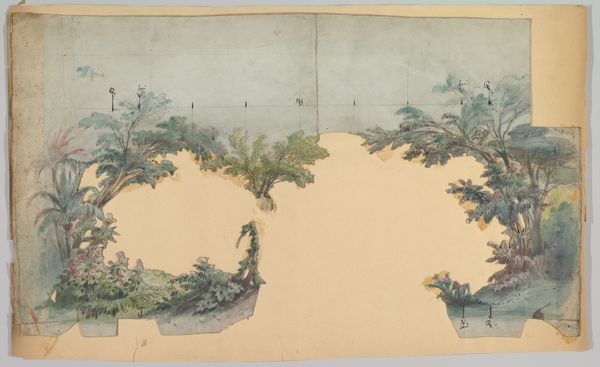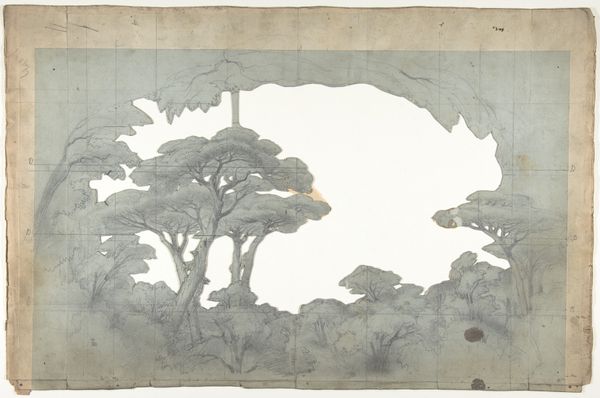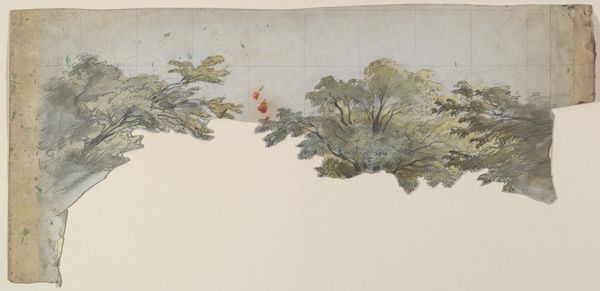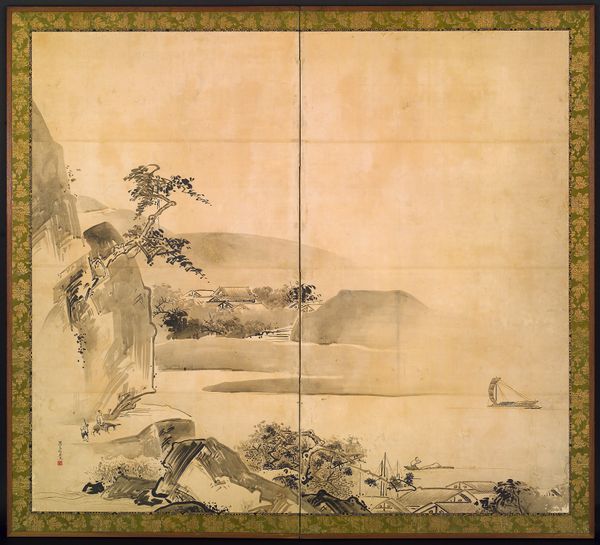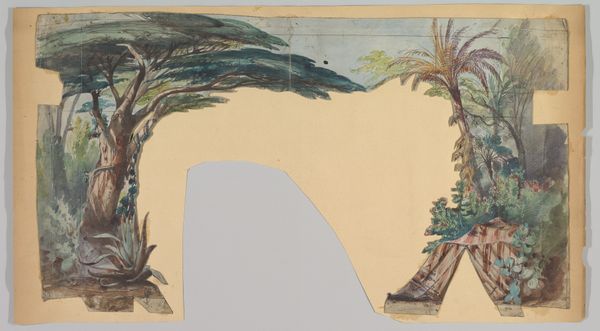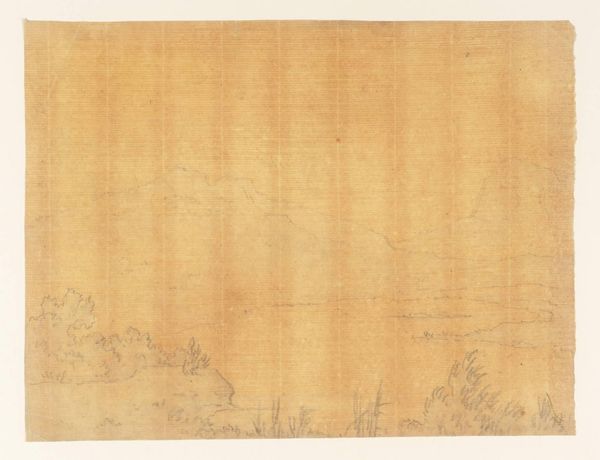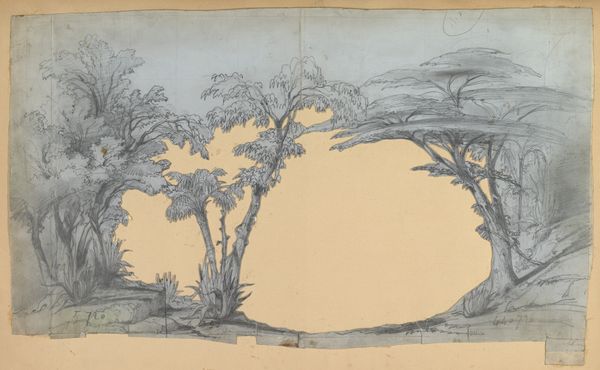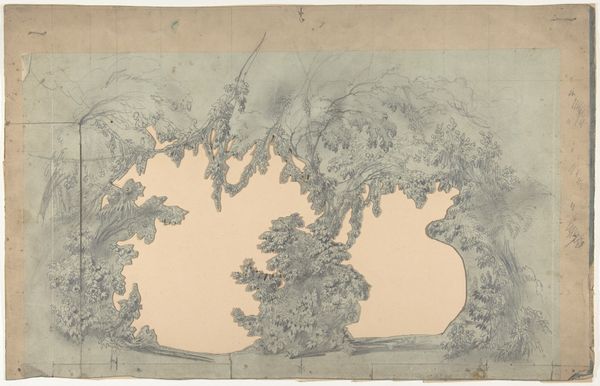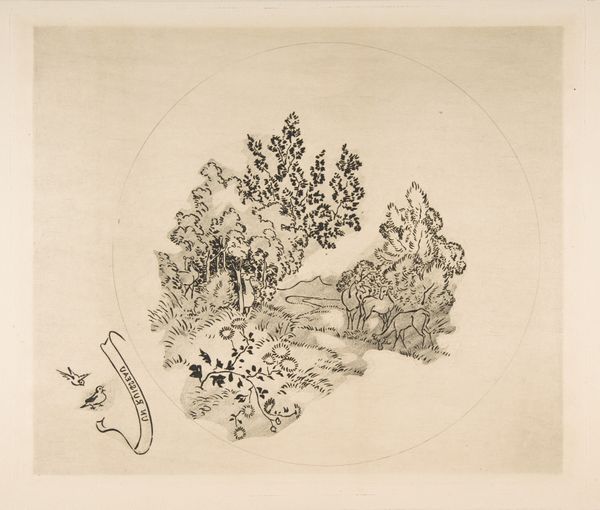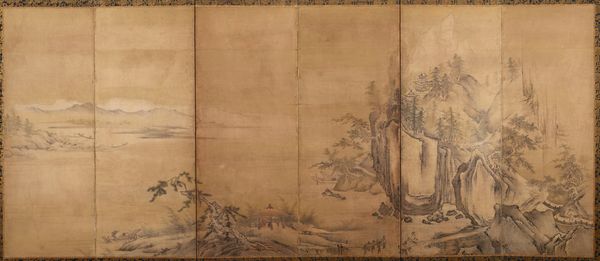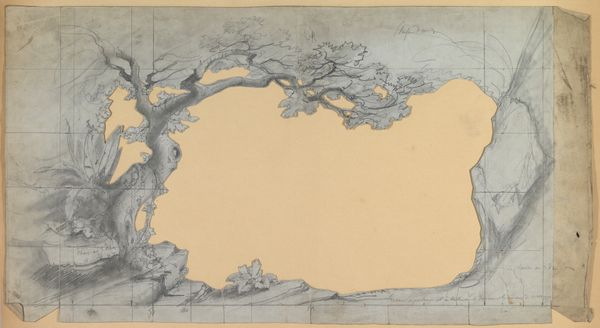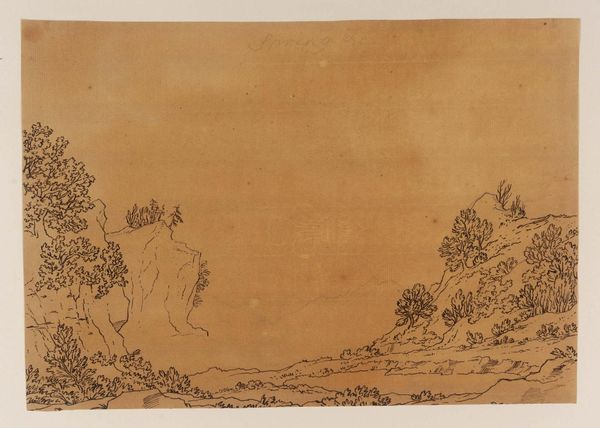
Design for a Stage Set at the Opéra, Paris 1830 - 1890
0:00
0:00
drawing, pencil
#
drawing
#
landscape
#
perspective
#
form
#
pencil
#
line
#
realism
Dimensions: Irregular sheet: 12 7/16 x 19 1/2 in. (31.6 x 49.5 cm)
Copyright: Public Domain
Editor: Here we have Eugène Cicéri’s “Design for a Stage Set at the Opéra, Paris,” created sometime between 1830 and 1890 using pencil and drawing techniques. The starkness of the sketch is fascinating. What stands out to you in this design? Curator: The striking feature is, indeed, its theatrical context. Stage design in 19th-century Paris wasn’t just about visual spectacle, it played a crucial role in shaping social and cultural narratives. This drawing gives us insight into the construction of illusions that framed both operatic performance, and, I would argue, larger societal expectations. Editor: Illusions, how so? Curator: Consider the strategic use of perspective. The artist uses form to create depth and manipulate the audience's perception. These weren’t merely backdrops, but carefully constructed spaces that reinforced power structures. Who was being shown what and how became a reflection of the values prized within the cultural elite. Can you see the influence on Parisian audiences? Editor: Absolutely! It makes you think about how stage design contributes to both escapism and the reinforcement of existing social hierarchies. So it's not just pretty, it is political! Curator: Precisely. Examining the artist’s choices allows us to understand the public role of art and the political dynamics embedded in imagery. And understanding how those expectations translate in modern context, like how a space influences our ideas or our cultural and societal norms. Editor: I hadn't considered the power dynamics within stage design before. Thanks, that’s really shifted my perspective on the work. Curator: My pleasure. Considering context, it highlights how stage design reflects, and also shapes, societal norms.
Comments
No comments
Be the first to comment and join the conversation on the ultimate creative platform.

